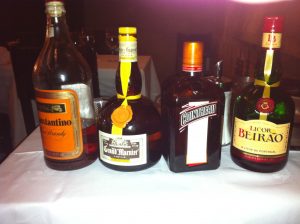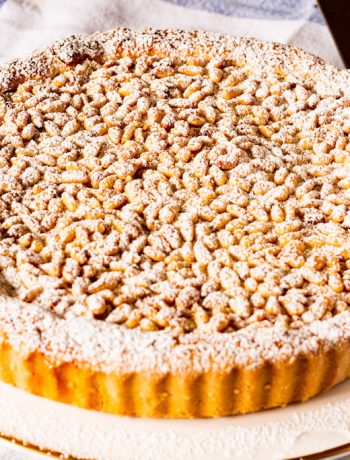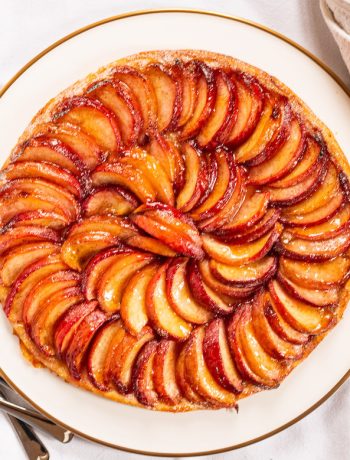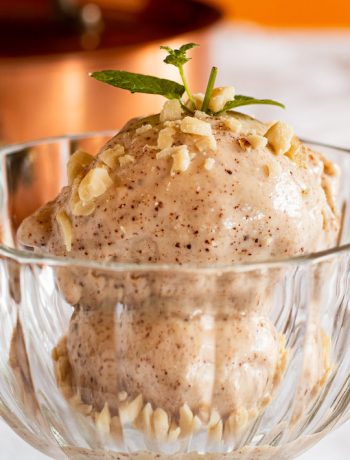Crêpes Suzette is the definitive classic French dessert pancake recipe. It is made in hotels and restaurants all over the world, and is famous for its table-side preparation conducted by a waiter rather than a chef. The dish is essentially folded crêpes basted in a sauce of orange (or maybe not), sugar and booze, with a characteristic flambé to finish. As a piece of theatre for a grand dining room it has no equal.
The origin of crêpes Suzette is a litany wishful bollocks. The most charming story is one from 1896 which Henri Charpentier was preparing a dessert for famous dirty bugger Edward, Prince of Wales (AKA ‘Edward the Caresser’, and later King Edward VII) in the Café de Paris, Monaco. As Charpentier added the alcohol, the dish accidentally caught fire, combined the flavours and resulted in a far better result than the version he was supposed to be making. After a painfully polite exchange of words with the FilthPrince, the dish was named crêpes Suzette after the lady companion of the Prince. The next day, Charpentier received a gift of a hat, and cane and a ring. One imagines that Suzette herself rose late and sore.

Despite the fact that Charpentier wrote this tale down in his autobiography Life à la Henri, Larousse summarily takes him down by stating the obvious fact that there is no way that Charpentier would have had the required seniority to cook table side for the heir to the British Throne. That job would have gone to the Maitre D’. Charpentier was 14 at the time.
Another version of events places Suzanne Reichenberg on stage at Comédie Française in 1897. Her role required her to make pancakes, and the owner of the establishment supplying the crêpes thought it would look cooler if she flambéed them. The owner in question was Joseph Marivaux, who later worked at the Savoy.
For me, crêpes Suzette begin and end in Restaurant Gambrinus in Lisbon, Portugal. It no exaggeration to say that this place makes the best crêpes Suzette on the planet. Even the New York Times pitched in and said as much. I have a friend who circulates in Lisbon’s high society, and he told me that the chap who made my dessert on the night I dined there was doing it without pay. The waiter had been working at Gambrinus for years, and had taken retirement. One day, he was in a car with his son. The car broke down on a highway, and the son, who was driving, stepped out to examine the car. He was hit by a truck and killed. The father was devastated, but knew that he needed a focus to control his own sanity. So he approached his old employer and asked to work for free doing the crêpes Suzette. I will never forget that man or his sublime crêpes.

Now we get to the knotty issue of how to make crêpes Suzette in the original style. The problem is that the original was never written down. Escoffier writes a version that is not what people expect, and his pancake mix A is too thin and has twice the sugar it needs in it. Moreover, hundreds of chefs have made up their own versions; the Americans have got hold of it and obfuscated it every way from Wednesday. The original tangerines have somehow become lost in favour of zippier oranges, and the Gordon Ramsay version from the F-Word appears to miss out the main sauce ingredient – butter.
When we came to make crêpes Suzette, we picked all that apart. We put the tangerines back (these are winter only). We contacted John Williams, Executive Chef at The Ritz (Escoffier’s old kitchen) and asked him about sugar in batter. We also acknowledged the Ramsay idea of putting some whole fruit in the sauce for textural interest. The result is The Nosey Chef crêpes Suzette that we are calling our own.
It’s absolutely brilliant.

Crêpes Suzette
Ingredients
- For the crêpes:
- 125g plain flour, sifted
- 2 tbsp caster sugar
- A small pinch of salt
- 3 eggs
- 300ml milk
- A little butter
- For the sauce:
- Juice of six tangerines
- Six more tangerines, peeled and segmented chef-style
- 50g caster sugar
- 100g butter
- 100ml Cointreau or Grand Marnier triple sec
Instructions
Make the crêpes in advance:
Whisk the ingredients with half the milk to combine, and then whisk in the rest of the milk to make a batter. Resist the temptation to use a blender as it will over-activate the gluten in the flour and stop the batter from running properly in the pan. Set aside for a while.
Heat the butter in a crêpe pan until foaming. Pour the excess butter off into a bowl to use for subsequent crêpes. Add a ladle of batter and spread out either by moving the pan or using a wooden spreader.
Cook for few moments until browning, and then flip the pancake over in the pan to cook the other side. Set the crêpes aside to keep warm.
To make the sauce:
Put the sugar in a cold frying pan, and place over a medium high heat until the sugar just starts to melt. Add the butter, and cook until the sugar has dissolved and a light caramel is forming.
Add the tangerine segments, juice and half the alcohol and let it bubble off.
Introduce the folded crêpes into the pan in as many stacks as you have diners, leaving space to be able to spoon that sauce. Baste the crêpes in the sauce to warm and flavour them.
Finally, add the rest of the alcohol, let it bubble for just a moment, and then ignite it.
Serve the crepe and tangerine slices with the sauce spooned over once the fire has gone out.
Notes
For 'chef-style' citrus preparation cut both ends off. Stand the fruit on one cut end, and the run a knife down the side of the fruit, cutting the pith from the flesh in a strip. Turn and repeat to work around the fruit until all the skin and pith is removed.



 (5 votes, average: 4.60 out of 5)
(5 votes, average: 4.60 out of 5)


No Comments